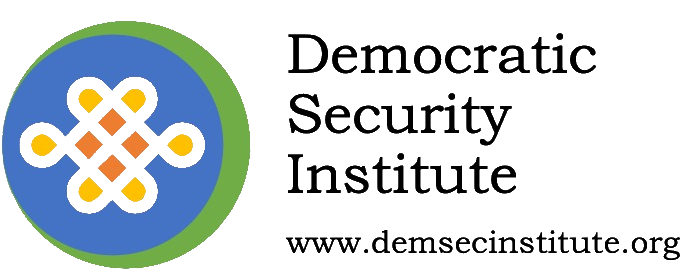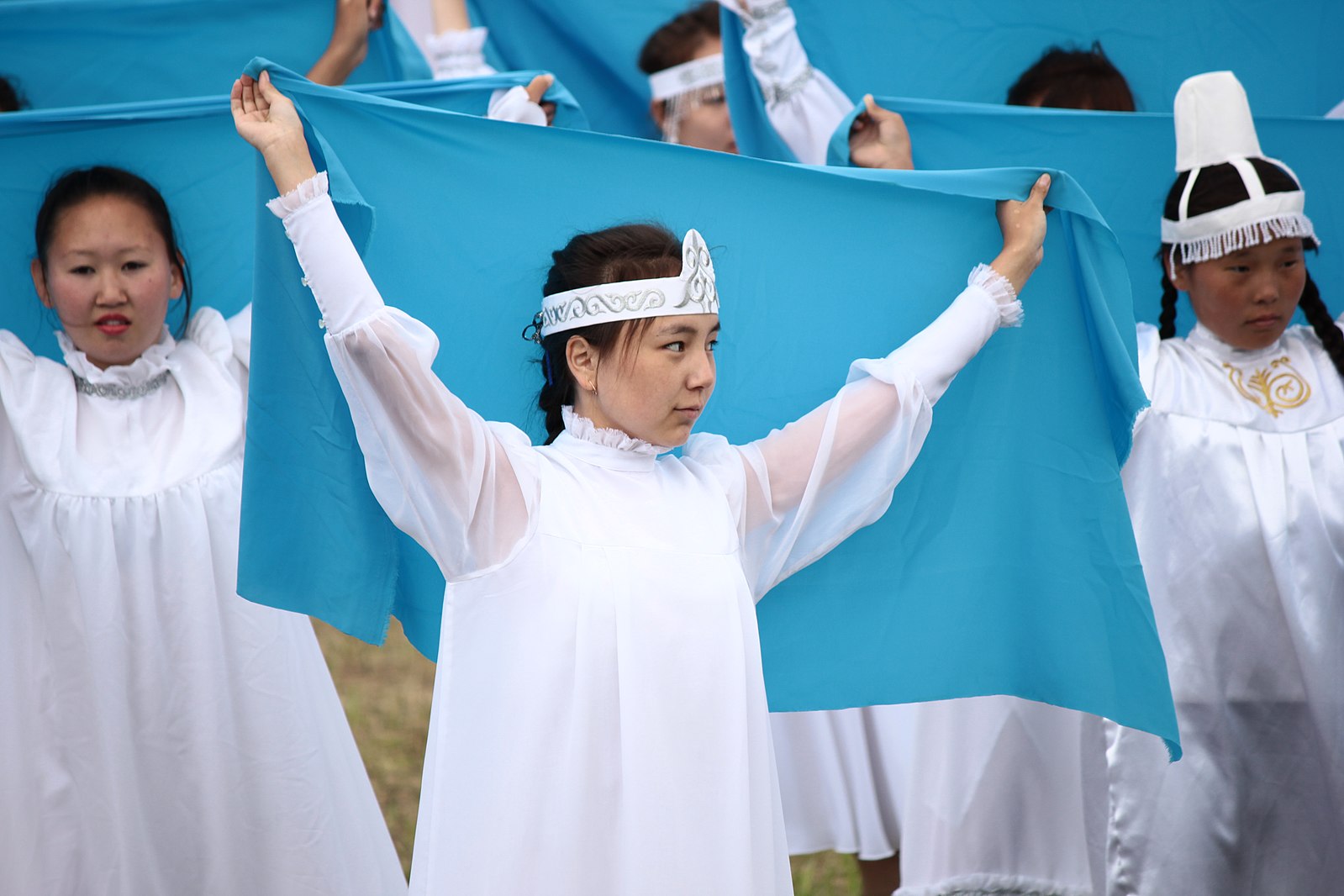Russia’s ethnic minorities are notoriously overrepresented in the death toll of Russia’s war in Ukraine. However, the fact that Arctic Indigenous peoples of Russia’s North are among the hardest hit is often overlooked. The disproportionate fatalities have put the very existence of many Indigenous communities in the Russian Arctic at risk.
As Russia’s military leadership does not disclose either the true scale or ethnic composition of its war losses, we can only analyse the ethnic breakdown of Russia’s casualties based on obituaries – or reports on funerals and memorials – published on social media or local news sites. These are monitored by several activist groups: most prominently, the one collaborating with the independent outlet Mediazona and BBC News Russian (source).
While this data is limited by what might be called ‘war obituary publishability’ rather than a full accounting of actual mortality, it still offers insight into the geographical and ethnic distribution of Russia’s confirmed war dead.
Analysis of the aggregated and cross-verified dataset reveals that Arctic Indigenous ethnicities – such as the Chukchi, Inuit, Itelmen, Koryak, Nenets, Nganasan, Udege, and Saami – are significantly overrepresented among confirmed casualties. In fact, they exceed even the Buryats and Tuvans, who are already well known for having suffered heavy losses in the war. These Indigenous communities are overrepresented not only compared to the rest of Russia but also compared to the non-Indigenous populations of their home regions, ruling out regional inequality as the sole explanation.
Ethnic Composition of Confirmed War Casualties
| Ethnicity | Confirmed Casualties | Casualties per 1,000 Population |
| Chukchi | 94 | 5.8 |
| Inuit | 8 | 4.8 |
| Itelmen | 10 | 3.9 |
| Khanty | 77 | 2.5 |
| Koryak | 28 | 3.7 |
| Nenets | 200 | 4.0 |
| Nganasan | 3 | 4.4 |
| Saami | 5 | 3.3 |
| Telengit | 28 | 10.3 |
| Udege | 7 | 5.3 |
| Buryat | 1,012 | 2.2 |
| Tuvan | 935 | 3.2 |
| Russia total | 96,371 | 0.7 |
(Source: Mediazona, link)
Modes of Recruitment to the War
A frequent question is whether these death toll disparities result from a deliberate Kremlin policy targeting Arctic Indigenous peoples or from targeting ethnic minorities more broadly; the obituary data suggests a more complex reality.
There are three primary recruitment methods: voluntary enlistment, convict/prisoner recruitment, and the 2022 ‘partial mobilisation’. Correspondingly, there are four main categories of soldiers:
- Professional soldiers already serving as of 24 February 2022 (kontraktniki)
- Convicts recruited from prisons
- Civilians drafted during the Fall 2022 ‘partial mobilisation’
- Volunteers who joined after 24 February 2022 (dobrovoltsy)
Motivations differ across these groups. Obituaries often include enough detail to categorise the deceased, and many Indigenous soldiers appear to have voluntarily enlisted after the war began, placing them in the dobrovoltsy group.
However, the distribution of these categories varies significantly by region.
For example, in Khabarovsk Krai, 80% (200 of 250) of Indigenous men who served in Ukraine were mobilised during the 2022 draft, according to Lyubov Odzyal, President of the Indigenous Peoples Association of Khabarovsk Krai (source).
A joint study by Important Stories and the Conflict Intelligence Team (source) revealed that 4,496 civilians were drafted in the Khabarovsk region during the mobilisation – data derived from federal compensation reports. Indigenous men were drafted nearly three times more frequently than non-Indigenous men. In this case, disproportionate Indigenous casualties stem from compulsory conscription, i.e., state coercion.
In contrast, Nenets Autonomous Okrug (NAO) has had one of the highest per capita death tolls among Russia’s 83 regions. Indigenous men are disproportionately represented among the dead, but they were mostly volunteers or prison recruits – not conscripts.
While NAO is considered economically prosperous due to oil and gas industries, these benefits largely bypass Indigenous communities, who face environmental degradation, poverty, and high incarceration rates. These socioeconomic pressures likely fuel voluntary enlistment and prison recruitment among Indigenous men.
In all three regions where the Nenets reside – NAO, Yamalo-Nenets Autonomous Okrug (YaNAO), and Krasnoyarsk Krai – they are overrepresented in the casualty lists.
NAO also appears to have been deliberately targeted by recruitment campaigns. The creation of a specialised Nenets Rifle Company within the 200th ‘Arctic’ Motor Rifle Brigade (based in Murmansk) likely contributed to the region’s extremely high per capita losses.
Why Legal Protections Failed
Given the existence of legislation exempting Arctic Indigenous people from military service, why did the 2022 mobilisation disproportionately affect them?
Human rights lawyer Evgenii Smirnov explained in an August 2023 interview (video) that while the law allows drafted Indigenous people to challenge their conscription, no such legal cases are known. The likely reasons: lack of access to information and legal support and the high degree of dependence of Indigenous communities on the state, making opposition difficult.
According to the Free Yakutia Foundation, some Indigenous sources claim that ethnic groups previously protected from conscription during WWII are now being targeted by Putin’s mobilisation. Ironically, their rights may have been better protected under Stalin than today.
Stereotypes and War Propaganda
Both Kremlin war propaganda and anti-Kremlin discourse exploit long-standing stereotypes about Arctic Indigenous peoples.
A positive stereotype – Indigenous men as ‘natural-born hunters’ and sharpshooters – likely helped justify the formation of the Nenets Rifle Company. This myth is bolstered by WWII memory, which Russian propaganda leverages to frame the Ukraine war as another battle against ‘Nazism’. Indigenous snipers of the ‘Great Patriotic War’ are celebrated as heroes, and their modern-day counterparts are framed as heirs to that legacy.
Many Indigenous communities take pride in this legacy, reclaiming it as part of their identity (for example), but the Kremlin co-opts this pride for recruitment purposes.
Meanwhile, negative stereotypes persist. Arctic Indigenous peoples are still labelled ‘primitive’ or ‘backward’ – a holdover from Soviet-era paternalism. For instance, Sergei Shoigu – former defense minister and an ethnic Tuvan – is frequently mocked by anti-Kremlin Russians and Ukrainians as an olenyevod (reindeer herder). This slur is racially coded (Shoigu has no ties to reindeer herding) and his ethnically Russian successor Andrei Belousov faces no such ridicule.
Recent research by Dr. Adam Lenton (Wake Forest University) presented at ASN 2024 found that Russians who oppose Putin and identify as liberal are, paradoxically, more xenophobic toward ethnic minorities than the general public.
This reflects a deep contradiction: while many Russians frame Ukraine’s resistance as a decolonial struggle, they simultaneously ‘other’ Indigenous minorities within Russia – undermining their own anti-imperial claims. Ukrainian voices have also echoed these colonial tropes when targeting Shoigu and other minorities with racially charged rhetoric.
This exclusionary discourse likely alienates Arctic Indigenous people from the anti-war movement, possibly contributing to their continued involvement in the war.
Conclusion
Russia’s Arctic Indigenous peoples are disproportionately impacted by the war in Ukraine. They suffer the highest per capita death toll and are drafted or recruited more frequently than other groups. In regions like Khabarovsk and Sakha, conscription appears targeted. In others, like NAO, tailored recruitment campaigns play a bigger role. Poverty, incarceration, and systemic exclusion compound the problem.
Kremlin propaganda capitalizes on Indigenous heritage and wartime myths to encourage enlistment. Meanwhile, both the government and opposition media fail to meaningfully engage with Indigenous voices or defend their rights.
If these trends continue, entire Indigenous cultures and nations risk disappearing within a generation. The human and cultural cost of Russia’s war in Ukraine will reverberate far beyond the battlefield.
This blog is published in partnership with the Democratic Security Institute (DSI) based in Tbilisi, Georgia. It is part of a series of blogs authored by fellows from DSI’s Eurasia Democratic Security Network (EDSN) on the interrelationship between democracy and security in Europe’s eastern neighbourhood. EDSN is supported by the US National Endowment for Democracy (NED).
Image credit: Tenebroid (Wikimedia Commons), 2021.
Maria Vyushkova (Batani Indigenous Foundation, Yarmouth, ME, USA) is a PhD computational scientist, Buryat activist and expert in how Russia’s ethnic minorities are involved in Russia’s war in Ukraine. Dr. Vyushkova completed her PhD degree in Chemistry from the Institute of Chemical Kinetics and Combustion in Novosibrisk, Russia in 2009, and as of 2022, worked as a computational scientist with the University of Notre Dame. When Russia invaded Ukraine in February 2022, Maria Vyushkova co-founded the Free Buryatia Foundation, the first ethnic anti-war organisation of Russia’s Indigenous people, and used her expertise as a computational scientist to analyse the ethnic composition and ethnic inequalities in the Russian-side death toll of the Ukraine war. In 2023, she published a pioneering research paper on Russia’s ethnic minority casualties of the 2022 invasion of Ukraine. On 18 September 2024, Maria Vyushkova testified in the US Helsinki Commission Congressional hearing on Russia’s imperial identity. The paper is prepared within the Fellowship of Eurasian Democratic Security Network implemented by the Democratic Security Institute with the support of National Endowment for Democracy

